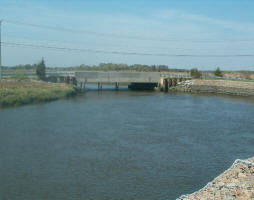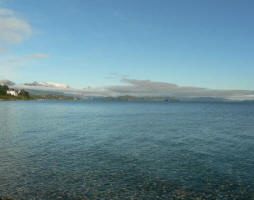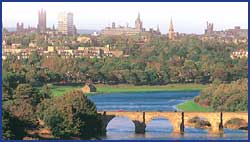 LIFE Nature links with the Fitness Check of EU Freshwater Policy
LIFE Nature links with the Fitness Check of EU Freshwater Policy
Hard work, careful planning and a shared commitment among partners have been acknowledged as helping a Best of the Best Life Nature project improve the ecological status of UK freshwaters.
Ranunculus Ebble
Results of the Fitness Check’ of Freshwater Policy (see previous article in this edition of LIFEnews) are to be presented at an EU stakeholder conference on water policy (The 3rd European Water Conference) during the spring of 2012. Delegates at this high profile event will be able to discuss a wide agenda of freshwater issues, including matters related to freshwater resources which are protected by EU laws.
LIFE Nature has an excellent reputation for its conservation work in important freshwater sites, particularly those that relate to the EU’s Birds and Habitat Directives. Good examples of this type of LIFE Nature support can be seen throughout the EU, and an award-winning project from the River Avon in Britain demonstrates the valuable work that LIFE is providing for nature conservation in freshwater environments.
Several different River Avons are found in the UK. This LIFE STREAM project (LIFE05 NAT/UK/000143) targeted its assistance to the Avon that flows in the east of the England, through the counties of Wiltshire and Hampshire. Noted for its large numbers of fish species and diverse vegetation, the Avon and its tributaries here are designated as a Special Area of Conservation (SAC). What’s more, the rich variety of bird life that live in the surrounding Avon Valley have led to it being classified as a Special Protection Area (SPA).
Some of the rare species which rely on the Avon’s chalk river habitats include Desmoulin’s whorl snail (Vertigo moulinsiana,) Bewick’s swan (Cygnus columbianus bewickii) and gadwall (Anas strepera). However, pressures on the river system including land use changes and historic land drainage activities have an impact on the conservation status of protected species. Hence the LIFE project was launched in August 2005 to help redress threats to these protected European freshwater habitats.
Project officer perspectives
Jenny Wheeldon
Jenny Wheeldon from England’s nature conservation authority was the STREAM project officer and she explains more about the background to why the LIFE support was needed saying, “Large parts of the River Avon system have been dredged in the past, with channels being widened and the gravel on the river bed removed. This damaged the habitat for fish and other wildlife, which need a mixture of clean gravel and muddy bits on the river bed, and a range of water depths and speeds, to thrive. Small scale restoration projects had been carried out over a number of years on the river, but there was a clear need to take a more strategic approach, including carrying out larger projects, monitoring the techniques used, and giving guidance about best practice.”
She continues, “The management of the lower River Avon SAC is closely linked with the management of the grazing marshes of the Avon Valley SPA. Restoring the Avon Valley to favourable condition requires rehabilitation of the ditch network, tree and scrub removal, and restoration or installation of sluices or structures. However, all these activities potentially affect fish populations in the river. We needed practical ways to overcome these conflicts and help us move forward in restoring the river and valley.”
LIFE funds offered the opportunity for Ms Wheeldon and her colleagues to carry out a partnership approach for solving the Avon’s habitat management challenges. This involved building an alliance between NGOs, other UK public sector authorities, and local community stakeholders to establish the best way for implementing the LIFE project.
Speaking about the project planning phases Ms Wheeldon recalls how, “Identifying feasible project options that could be planned, designed and built within a four year LIFE project was a difficult and crucial part of the project bid. Once the STREAM project started, getting all the project partners together and reiterating what their obligations were, and agreeing detailed timescales, and milestones for delivery was crucial. Making sure all the partners knew what was expected, and when they needed to do it by made it easier to quickly identify potential problems (timing, technical or financial) and to address them.”
Networking and communication skills were therefore essential elements in the nature conservation toolkit for this freshwater project. Such expertise is also crucial for all other habitat projects that depend on partnership contributions.
| Contact information | n/a |
|---|---|
| News type | Inbrief |
| File link |
http://ec.europa.eu/environment/life/features/nat_freshwater.htm |
| Source of information | EC DG Environment |
| Keyword(s) | EU-LIFE, EU-WFD |
| Subject(s) | HYDRAULICS - HYDROLOGY , METHTODOLOGY - STATISTICS - DECISION AID , NATURAL MEDIUM , POLICY-WATER POLICY AND WATER MANAGEMENT , PREVENTION AND NUISANCES POLLUTION , RIGHT , RISKS AND CLIMATOLOGY , WATER QUALITY |
| Relation | http://www.emwis.net/initiatives/life |
| Geographical coverage | n/a |
| News date | 05/12/2011 |
| Working language(s) | ENGLISH |
 you are not logged in
you are not logged in





